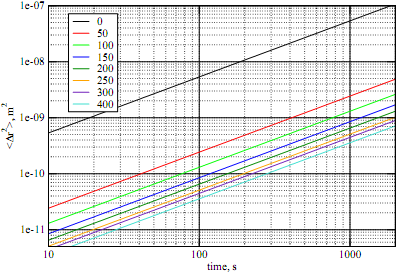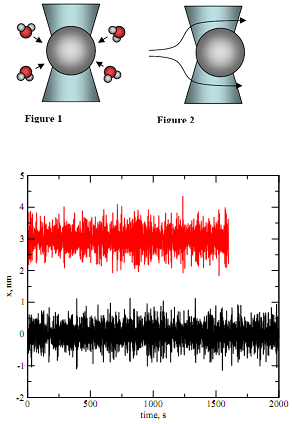Reference no: EM134560
1) Polymer diffusion: The figure below shows the result of a particle tracking experiment where lateral positions of fluorescent polystyrene sulphonate (PSS) molecules were recorded. The curve labels on the graph show the polymer concentration in water g/ml.
If the viscosity of the pure water is 1.10-3 Pa s and the measurement is done at room temperature, obtain an estimate of
a) size of the molecule (hydrodynamic radius);
b) degree of polymerization (assuming the Kuhn length for PSS is 3°A).
c) viscosity of the concentrated solutions as a function of concentration.

2) Calibration of an optical tweezer: You performed the following calibration experiments at room temp, 25?
C for an optically trapped latex bead that is free in solution: x displacements of the trapped bead, in nm, were gathered for some time in stationary water. Fluctuations in position are due to random bombardment of water molecules such as those shown in the figure below (black curve). In the second stage of the experiment, the fluid chamber surrounding the bead was moved along the x direction at a constant velocity of 5.0 m/ms (red curve). Data from an actual experiment, calib noflow.dat and calib flow.dat, can be found on the Black board/Assignments page. Modeling the optical trap as a Hookean spring, calculate the trap stiffness using the Boltzmann distribution. Calculate the sphere diameter by comparing the Stokes drag and the tweezer force that balances the drag. Assume the viscosity of water 10-3 Pa s.

Hint: The Boltzmann distribution of states of a particle with different energies in a potential well is given by
N(x) = N(0)e-(U(x)-U(0))=kT
where N(0) is the frequency of finding particle in the energy minimum and the minimum is at x = 0.